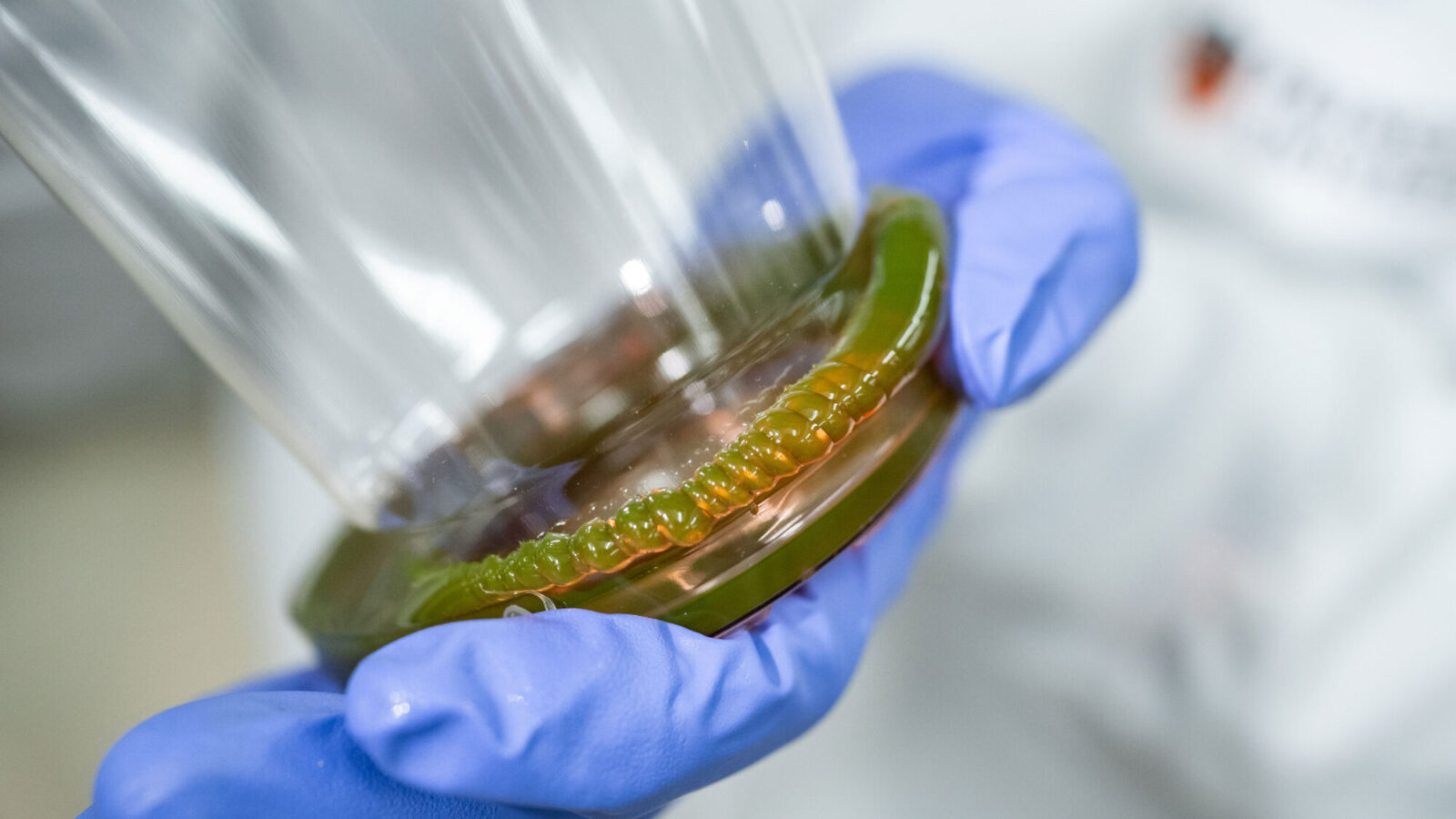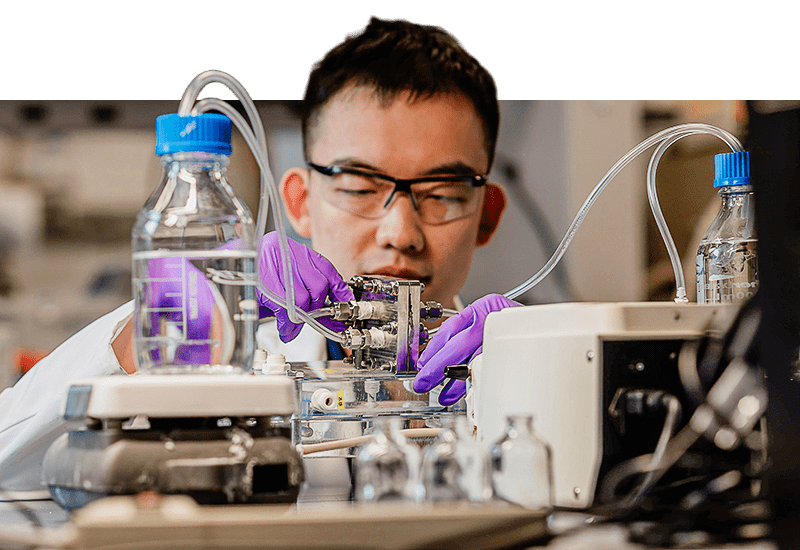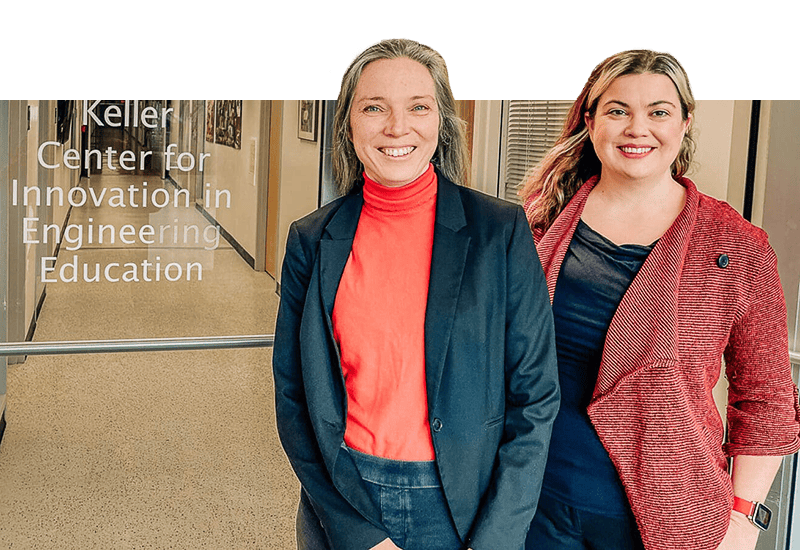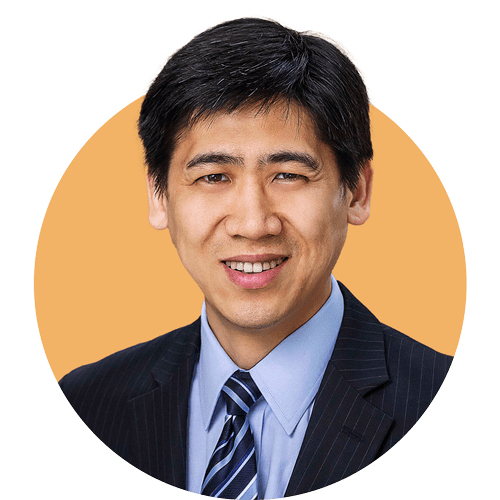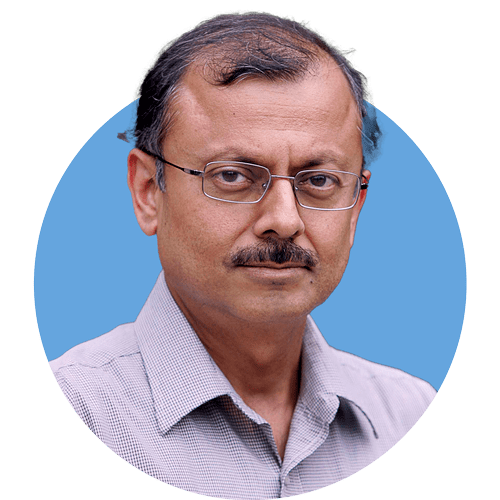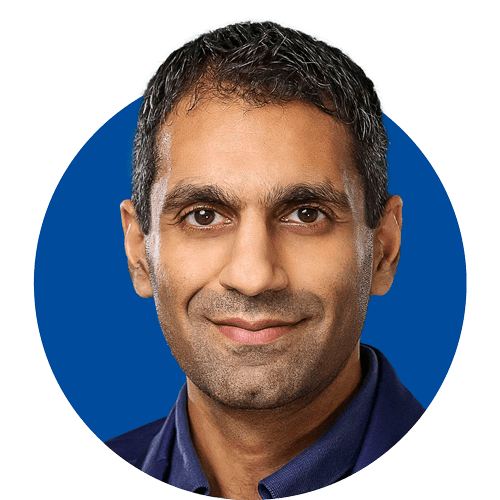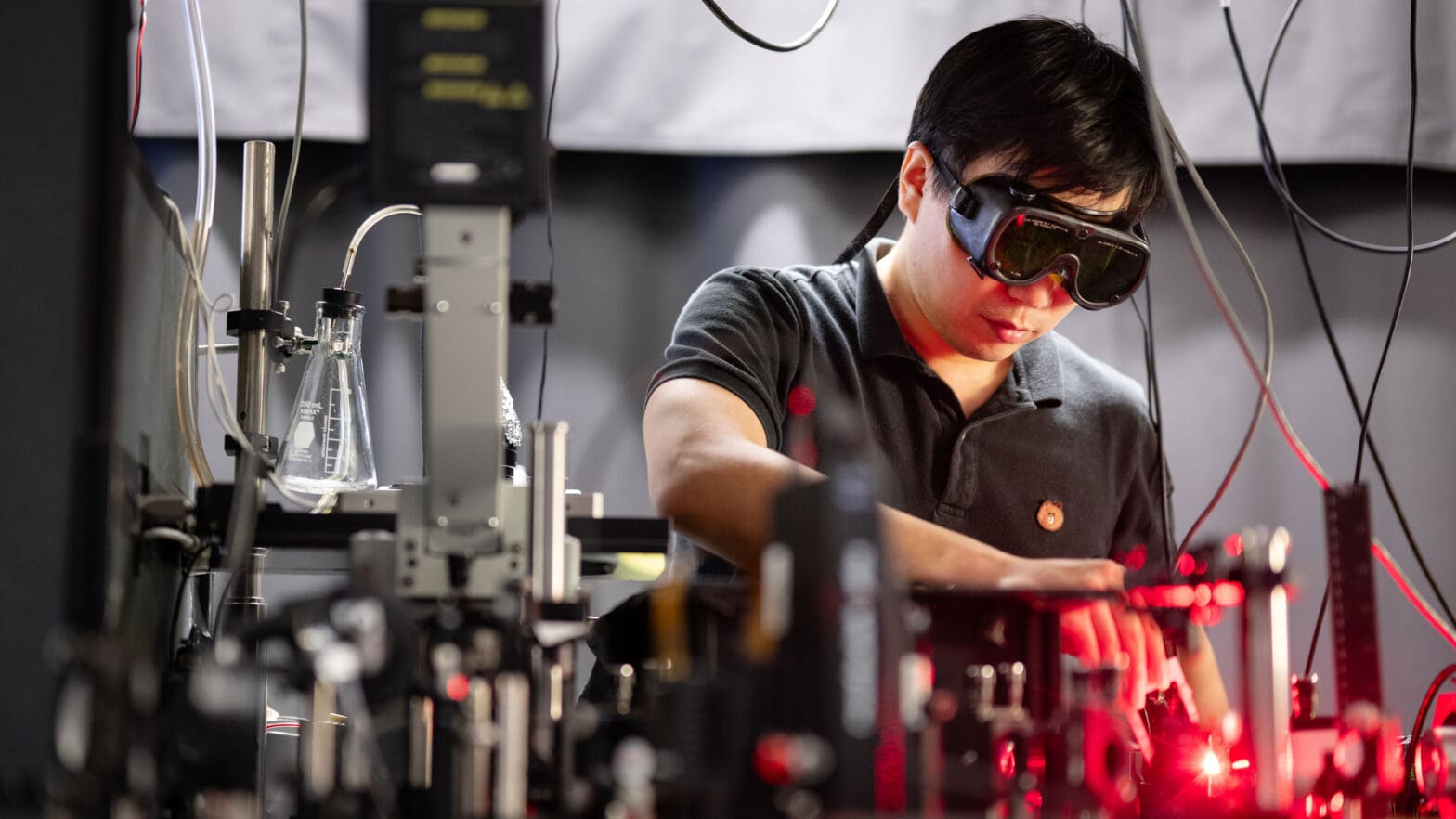
Turning breakthroughs into lasting solutions
By
on
“Initially, we supported it with grants as a research project, but it’s not a research project anymore,” said co-creator Matthew Salganik, a sociology professor and former director of the Center for Information Technology Policy. “We were scraping money together to keep it going.”
Without a major overhaul, closure of All Our Ideas seemed likely. That’s when the University’s Keller Center stepped in. Keller’s experts helped Salganik’s team create a solution, and the center provided key funding to create a sustainable future for the survey technology. This year, All Our Ideas is moving to a new platform with new programming. Organizers are adding features and planning for expansion.
“The last-mile problem of moving academic research into the world is very hard,” Salganik said. “I am very excited that Princeton is working to support this.”
The All Our Ideas rescue was part of an initiative the Keller Center unveiled this summer. The Design for Innovation Program supports six projects — three from natural sciences and engineering and three from social sciences and the humanities — all in need of expertise beyond the academic discipline from which the project emerged. Over the next year, the program will help expand a budding effort to sustainably extract lithium from saltwater, bring theater alive through the internet, and harness architecture and land use to combat sexual violence.
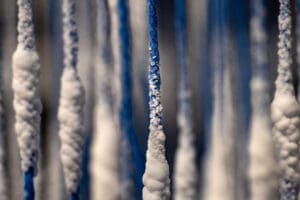
The program’s co-directors, Manish Bhardwaj and Nena Golubovic, have extensive experience in developing projects with noted impact in the business and nonprofit worlds. Bhardwaj is a cofounder of Innovators in Health, a nonprofit that provides health care in rural communities in India. Golubovic is a former managing director at IP Group, a London-based investment firm specializing in intellectual property and early-stage ventures coming out of academic institutions. Both are part of a growing group of programs and experts at Princeton focused on innovation and design, which is a priority of Andrea Goldsmith, dean of the School of Engineering and Applied Science, and Naveen Verma, director of the Keller Center for Innovation in Engineering Education.
Bhardwaj said the purpose of the Design for Innovation Program is to help faculty develop lasting solutions from innovative ideas. Whether that is a new business, a nonprofit or something else altogether, “our role is to accompany the faculty through the entire process.”
“Of course, Princeton has always had incredible impact through research and scholarship,” he said. “What this program allows is an additional pathway where the faculty can go beyond the academy and launch programs that have an impact beyond scholarship, and which inevitably feeds back into new insights for their fundamental research.”
Verma, a professor of electrical and computer engineering, said that Keller’s advisers helped him greatly when spinning out the first innovation from the lab to the world outside Princeton. When Verma became Keller’s director two years ago, he wanted to ensure the same opportunity for faculty members across the University.
“Faculty have great ambition to have impact in the world broadly,” said Verma, whose recent startup powers advanced AI systems. “There are ways we can help them understand and pursue these ambitions.”
By bolstering that experience, Keller’s design program does more than move breakthrough ideas beyond the lab. Organizers speak from experience when they say faculty members return from entrepreneurial ventures with a greater understanding of their discipline and new ways to teach students.
“For Princeton to maximize its impact on New Jersey, the country and the world, we must get ideas out of our research labs and into practice,” said Goldsmith, who has been a cofounder of two successful companies in wireless technology. “Not only does this increase our ability to positively impact society but, in addition, it enhances our research and teaching by providing insights into real-world problems our research can address, and bringing the topics we teach in the classroom alive in compelling ways. This Keller program is very exciting because it brings benefits directly to society while enabling our faculty and students to have significant impact beyond the ivory tower of academia.“
Exploring the wide-open spaces of the miniature realm
Chemistry professor Haw Yang keeps videos of individually controlled micro-swimmers on his phone. Bacteria-sized robots created in his lab on the lowest floor of the Frick Chemistry Laboratory, the micro-swimmers are one of several projects Yang’s team is pursuing in the sub-microscopic realm.
“When scientists formulate drugs, they know when they work, but they often don’t know why they work,” Yang said. Many of those answers lie in a realm so small and fast-moving they are beyond answering. They are found in the specific interaction of nanoparticles and cellular membranes or in the molecular arrangement on a nanoparticle’s surface.
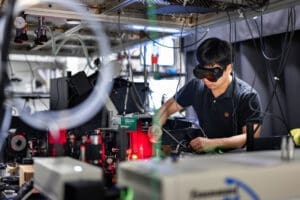
“These are questions that are intuitively relevant, but they just don’t have the tools to answer,” Yang said. “Now we have the tool.”
Yang’s research group has developed instruments that can create three-dimensional videos of nanoparticles and a related technology that can map out a particle’s structure in detail. Using his array of machines, scientists can watch tiny drug-delivery particles interact with cells and bacteria. They can track changes in the particles’ structure and see how they affect an outcome. But there is a problem. The machines are expensive, cumbersome and difficult to use.
“Right now, it is very home-built. Very user-hostile,” Yang said.
Yang’s goal is to get the technology into as many hands as possible. But the difficulty of building and operating the machines makes that impractical. That is where the Keller Center has stepped in. Working closely with Golubovic, Yang is developing his technology as a platform rather than a specific machine. They have brought in an industrial engineering specialist to think through translating Yang’s technology into systems that could operate more widely.
“Nena has been amazing in making these connections and in thinking through the steps,” Yang said. “Beyond the lab — that is where Keller is going to help move forward.”
Creating safe spaces with better buildings
“This project grew out of book I co-wrote in 2020, ‘Sexual Citizens,’” said Shamus Khan, the Willard Thorp Professor of Sociology and American Studies. “Its aim was, immodestly, to change the conversation about campus sexual assault.”
Khan and co-author Jennifer Hirsch, a 1988 Princeton alumna, started with the proposition that considering sexual assault a criminal justice matter was a necessary, yet insufficient, approach. Khan said that traditional policies “spend a lot of time talking about what to do after assaults occur.”
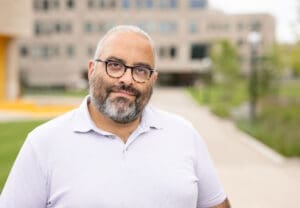
“We think those are important conversations,” he said. “But we also point out that it is unlikely to stop assaults from happening.”
Khan and Hirsch, a professor of sociomedical sciences at Columbia University, approached the problem from a public health perspective. Rather than focusing on students’ individual behaviors, their book and subsequent work explore what school communities could do to change the social structures that make sexual violence more likely to occur.
“The insight behind it is that it is very hard to make different people, but you may be able to change the environment people are in and have a measurable, positive impact,” Khan said. The research covers a number of areas, but a major focus is on the built environment. Hirsch and Khan argued that it is possible to reimagine campuses’ allocation of space and physical characteristics to change the likelihood of sexual violence. This includes encouraging administrators to prioritize spaces where diverse groups of students will feel at home, where students from different backgrounds will encounter each other, as well as considering how space encourages either safer or more dangerous alcohol consumption. Princeton consulted with Khan during the recent construction of New and Yeh Colleges.
National Public Radio named “Sexual Citizens” one of the best books of 2020, and many schools have reached out to the authors for advice. The researchers believe their approach could be transformational, but Khan said that developing a whole nonprofit devoted to the issue was beyond the capacity of two busy academics.
“Keller has an enormous number of people who have grown enterprises, both public and private,” Khan said. “Manish has been incredible just helping me think through the process. With his expertise in public health, it is really helpful to have him as one of the people behind this.”
The Keller design grant has helped hire four staffers to administer the program and, critically, evaluate different elements of effectiveness. The group is doing pilot work with several universities with an eye toward expanding.
“As scholars, we have little training on how to convert a decent idea into something that works in the world,” Khan said. “This Keller Center grant gives me access to people who have done that before.”
Clean energy on a shoestring
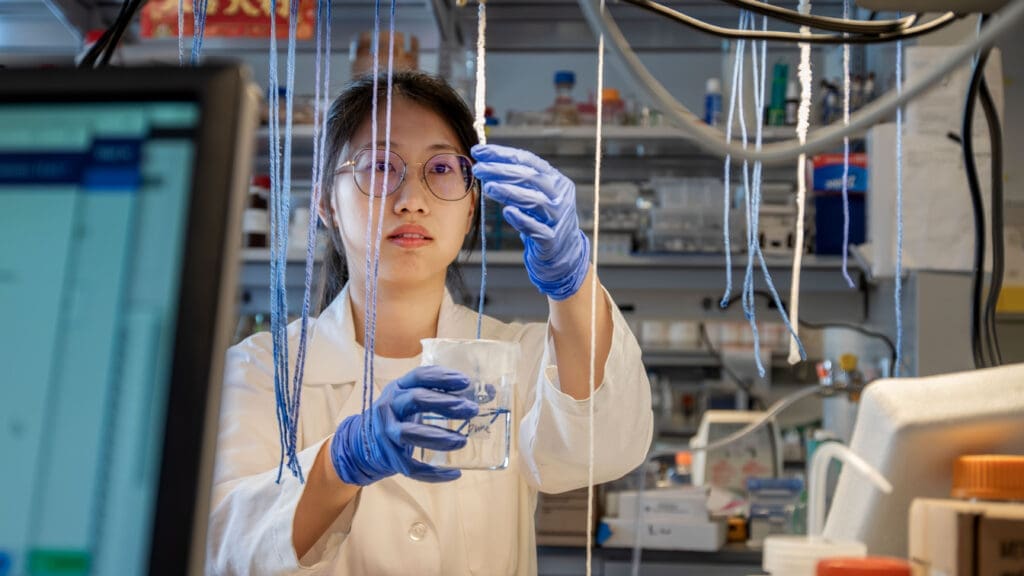
Green energy sometimes is not as green as we hope. Minerals need mining; materials need processing. All this leaves a trail of energy and pollution. Lithium, the silver-white metal at the heart of battery technology, is no exception, requiring vast tracts of land for evaporation pools or industrial-scale mining for ground extraction. Z. Jason Ren, professor of civil and environmental engineering and the Andlinger Center for Energy and the Environment, has a technology that could markedly reduce that impact.
The system deploys specially designed strings to pull lithium from briny water. Leveraging capillarity, the force that trees use to pull water from their roots to their branches, Ren’s technology deposits both standard salt and lithium salt along the string. Because the chemicals have different solubility and mobility, the salts naturally separate themselves along the string during water evaporation, allowing for easy harvesting. The technique slashes the amount of land needed for evaporation pools and allows for production from water with much lower concentrations of lithium than current operations. Plus, it has very low environmental impact.
“Our approach is cheap, easy to operate, and requires very little energy,” Ren said. “It’s an environmentally friendly solution to a critical energy challenge.”
Together with postdoc Sean Zheng, Ren has cofounded a company, PureLi, , to develop the technology. Their research was recently featured in Nature Water, and the system has received a lot of attention from investors and potential customers, but Ren said he was uncertain about the best way to find the right partner to expand the technology.
“I felt we have a good technology, and we want to see it make a real-world impact,” he said. But Ren said he did not have enough expertise and experience to make the right choice among proposals for developing the technology.

He said advisers from Keller helped him identify product-market fit and evaluate potential partners, so he could better understand different options for commercializing the lithium extraction technology.
“Nena and Manish have been very helpful in gaining me new perspectives,” Ren said. “That has put us in a better position for finding the right partners.”
Ren described the program’s mission as opening doors for innovators who are more typically comfortable in academia rather than industry.
“Many scholars, myself included, are more comfortable with basic science,” he said. “But if they want to move a little beyond what they traditionally do and make real -world impacts, this is an excellent avenue.”
A better opinion of polling
Polls have long promised to give leaders a clear picture of their constituents’ priorities, but things are rarely that simple. Results can be shifting or unclear. Questions and variables can have unintended affects. After nearly a century of widespread use, polling remains a tricky science.
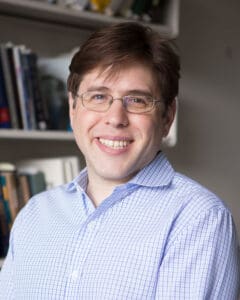
All Our Ideas sprung from Matthew Salganik’s desire to make a better survey. Instead of asking static questions, the online system asks respondents to evaluate two options at a time, choosing one over the other and then moving on to two more choices, continuing as long as they want. The system also allows respondents to add new choices to the survey, which are presented to future participants. The goal is to develop an understanding of public opinion that is more flexible and nuanced than that typically delivered by standard polling. For example, New Jersey used All Our Ideas to get a better understanding of residents’ priorities for spending on climate change.
“Traditional surveys are really good at collecting lots of information quickly and they are relatively easy to analyze, but the challenge with these surveys is you have to write all the questions and answers ahead of time,” Salganik said. “It makes it hard to write about things you don’t know about already. And things you don’t know about often turn out to be the most important.”
All Our Ideas is an attempt to fuse the quantifying strength of traditional surveys with the depth of an interview, Salganik said. Built in part with funding from Google, the system hosts 25,000 surveys with more than a million user-generated ideas and 57 million responses.
The new version of the system will be overseen by the Citizens Foundation, an nonprofit formed after the 2008 banking crisis and based in Iceland and the United States. Foundation President Robert Bjarnason said the foundation’s goal is to maintain trust between government and citizens, so All Our Ideas fit perfectly in its existing strategy. The foundation’s systems are used extensively by the government in Iceland, but the software platform is available internationally.
“The basic idea is to look at how we can use collective intelligence to make better decisions,” Bjarnason said. He said the Keller Center’s support would allow the foundation to upgrade All Our Ideas’ software as well as its administrative tools. “It is important for the continuity of the project, to move it into the latest technology and sustain it as an important tool.”
Salganik said the project was part of a greater effort to build a digital public infrastructure similar to the physical infrastructure that undergirds society.
“Much of physical infrastructure is controlled by the public, but most digital infrastructure is controlled by companies who are motivated by profit,” he said. “What would it mean if we had a digital public infrastructure? What would it look like? These are important questions.”
Analytics on the cutting edge
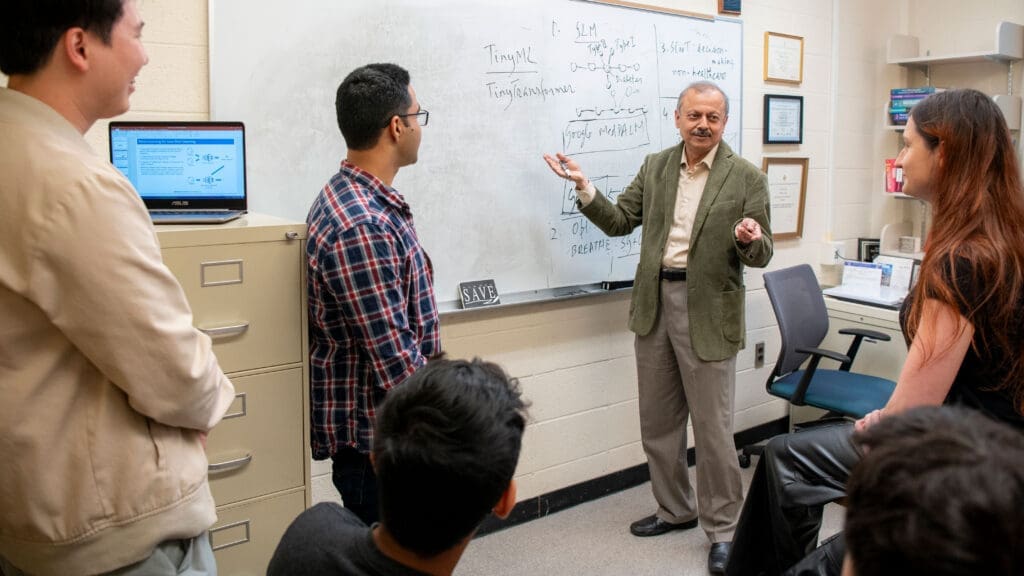
The massive proliferation of digital devices that power society does not concern Niraj Jha. The vast ocean of data supporting them does.
“There are 4 zettabytes of data collected every year,” said Jha, a professor of electrical and computer engineering. That’s 4 billion one-terabyte hard drives worth of storage.
Dealing with all that data requires resources, computation, transmission and networking. It also requires time that slows down rapidly reacting sensors required for smart cars and medical devices.
To reduce bottlenecks, researchers have worked hard to add computing power to the edge of networks, so data gets processed much closer to its source. That is not close enough for Jha. “Why not have the analytics or intelligence in the sensor itself?” he asked.
Jha’s research team at Princeton has developed a suite of tools to optimize energy and computational power at the very edge of networks. The tools allow designers to tailor their devices to make decisions locally rather than transmit information to a central processor. A smartphone, for example, would be able to analyze a photo of a skin blemish and decide whether it required a visit to a physician. Or a wearable sensor would determine whether a user was experiencing heart arrhythmia. Or a collection of wearable sensors embedded in a smartwatch could detect COVID-19, Type I/II diabetes, or depression.
As a cofounder of the edge analytics startup NeuTigers, Jha already has experience in the business world. He said the Keller design grant has allowed him to expand that knowledge and to think of other ways his research could move into the world beyond the lab.
“The aim is to maximize impact,” Jha said.
Besides the ability to expand on his team’s research, the Keller advisers have allowed Jha’s graduate students to get a new perspective on technology that is not always available to researchers.
“Some of them have an entrepreneurial interest,” he said. “This is an opportunity for Ph.D. students that is beyond the lab.”
Live performance in a virtual world
Theater is a conversation. Actors, musicians and audience all engage in the ancient call and response that brings performance to life.
During the COVID-19 pandemic, Elena Araoz, a senior lecturer in theater at the Lewis Center for the Arts, worked to bring that same living performance through screens. Araoz, a pioneer of virtual live theater, wanted to use the technical experience of the Princeton community to span the gap between virtual and in-person spaces.
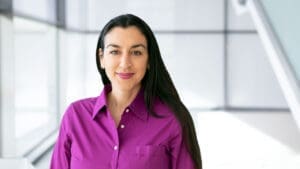
“We had to figure out a way to capture the essence of theater,” Araoz said.
Her research project, Innovations in Socially Distant Performance, supported by the Lewis Center for the Arts and an innovation grant from the Keller Center, was selected by the Library of Congress for its Coronavirus Web Archive documenting the impact of the pandemic on life in the United States. The project has produced virtual theater and partnered with numerous theater and opera companies who moved their productions online. Their award-winning live virtual plays and operas have been critically acclaimed by The New York Times and The Washington Post. In a related project with McCarter Theatre, she created a series of virtual monologues that destigmatize mental illness.
Araoz said she has been fascinated by the development of online culture and interested in moving theater into that world.
“When the Keller Center put out the call for innovation, I wondered why we have not been having a lot of interaction with the engineering side of campus,” she said. “I was in a place where technology was necessary, and I needed engineers and technologists as collaborators.”
The new project will harness technology to allow the audience and performers to verbally react to each other in real time. Araoz said the experience will create a feedback loop that is central to live theater, but has been missing from virtual performances in which performers cannot hear and respond to the audience’s audible reactions.
“This online, live feedback loop, surrounding a culturally relevant story, can only lead to a new form of dramatic writing,” she said. “A new art form will certainly be the outcome.”
Araoz said she has had many conversations with Keller Center experts, not just about the technical aspects of her work but about the complementary roles of art and technology. “Manish was the one who really helped me articulate how we think about innovation, not just from a scientific perspective but also from an artistic and cultural perspective,” she said.
The Keller grant will allow Araoz’s team to create a new work that further moves theater into the virtual world. Writers, actors and designers will work alongside engineers and technologists on the production.
“We are bringing theater to engineering and engineering to theater,” she said.


